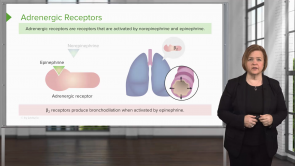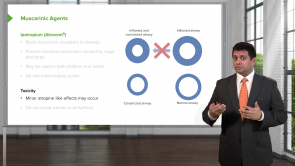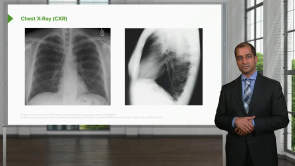Mechanical Ventilation
Über den Vortrag
Der Vortrag „Mechanical Ventilation“ von Carlo Raj, MD ist Bestandteil des Kurses „Pulmonology: Foundations“.
Quiz zum Vortrag
Which of the following statement regarding positive end-expiratory pressure (PEEP) is correct?
- PEEP treatment might be effective in patients with an acute decrease in functional residual capacity (FRC).
- It is a mode of therapy never used in conjunction with mechanical ventilation.
- At the end of exhalation, PEEP maintains the patient's airway pressure below the atmospheric level.
- PEEP works by exerting pressure that does not oppose passive emptying of the lung.
- PEEP treatment is very ineffective in patients with diffuse lung disease.
What happens to the alveoli with the use of positive end-expiratory pressure?
- Keeps the alveoli open even at the end of expiration
- Keeps the alveoli closed at the end of expiration
- Keeps the alveoli in a state of immobility
- Keeps the alveoli closed at the end of inspiration
- Keeps the bronchioles open at the end of expiration
Which of the following is a common complication of positive end-expiratory pressure ventilation?
- Obstruction to the flow in the pulmonary capillary
- Lung infection
- Hypercapnea
- Volutrauma
- Interstitial emphysema
Diese Kurse könnten Sie interessieren
Kundenrezensionen
2,0 von 5 Sternen
| 5 Sterne |
|
0 |
| 4 Sterne |
|
1 |
| 3 Sterne |
|
0 |
| 2 Sterne |
|
0 |
| 1 Stern |
|
2 |
Dr. Raj gave a nice succinct introduction to mechanical ventilation. The lecture was a primer for other more complex content. I appreciated the connection of high PEEP to pulmonary vascular obstruction giving rise to right heart failure. Given this, it would be helpful to discuss in more detail the pitfalls of excessive PEEP on the pulmonary vascular relative pulmonary hypertension and right heart failure, unless of course this is covered in a future presentation that I haven’t seen yet. Regarding the nursing comments. I can appreciate the difficulty of grasping the nuances of mechanical ventilation as it is a complex topic. There are many variables to consider when a patient is on a ventilator. PEEP, respirator rate, minute ventilation, tidal volumes, dead space, airway pressures, etc. It can easily become a blur; however, I respectfully disagree with the RN comments. RNs working in critical care, including emergency departments are best served when they understand this topic as they will be able to care for their patients more effectively.
2 Kundenrezensionen ohne Beschreibung
2 Rezensionen ohne Text

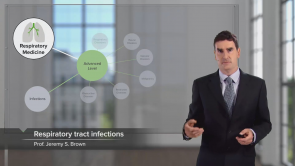

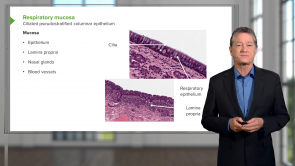
![Respiratory System [Archive]](https://assets-cdn1.lecturio.de/lecture_collection/image_medium/7488_1545146213.png)
